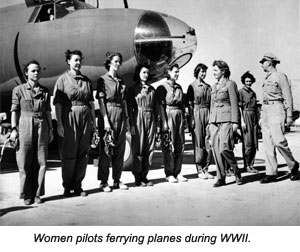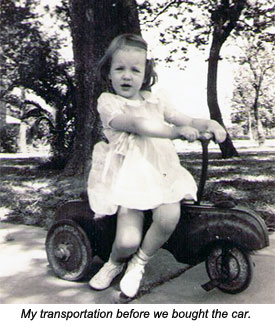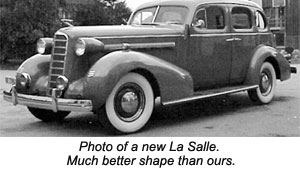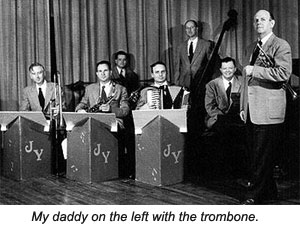Blog
gee our old la salle ran great: what world war ii took from us, the family car brought back.
Note from the Graytripper: Inclement weather, holidays, and a bout with an upper respiratory infection has limited any new Graytripper jaunts for the past few weeks. So, I want to take you on a nostalgic trip back in time to when our country faced World War II. It was a time of unity without political in-fighting and the divisiveness of today. It wasn't necessarily a better time - just a different time and I thought you might enjoy the tour with first-hand memories of someone who was there.
Memories can be more than pleasant remembrances; many times they are reflective of historical events. My favorite childhood memory of going with my father to buy a "new" car is influenced by world conditions at that time.
 It was 1943, and the ominous presence of World War II had melded into a way of life for American families. Food was scarce since most supplies were sent overseas to feed the men fighting the war. Ration stamps were used to purchase even the essentials. The shortage of butter brought a rise in the popularity of oleomargarine. This was a stark white glob of something that resembled Crisco. It came with a packet of yellow food coloring that could be stirred in to make the product more appetizing. Mixing the color into the margarine was a fun job for my brothers. They even got a little creative with food coloring and we frequently had blue, green, or even red colored spread for our toast. Gasoline became a limited, precious commodity. Leather for shoes was non-existent, and my father, like other men, put folded cardboard in the bottoms of his work shoes to cover the gaping holes in the soles.
It was 1943, and the ominous presence of World War II had melded into a way of life for American families. Food was scarce since most supplies were sent overseas to feed the men fighting the war. Ration stamps were used to purchase even the essentials. The shortage of butter brought a rise in the popularity of oleomargarine. This was a stark white glob of something that resembled Crisco. It came with a packet of yellow food coloring that could be stirred in to make the product more appetizing. Mixing the color into the margarine was a fun job for my brothers. They even got a little creative with food coloring and we frequently had blue, green, or even red colored spread for our toast. Gasoline became a limited, precious commodity. Leather for shoes was non-existent, and my father, like other men, put folded cardboard in the bottoms of his work shoes to cover the gaping holes in the soles.  However, there was a feeling of national unity with families gathering around the radio each night to listen fervently for any news from overseas. President Roosevelt addressed the nation regularly on his series of fireside chats. Women filled the jobs left by men who had joined the armed services. Those who weren't working outside of the home spent many hours a week volunteering for the Red Cross and other organizations. I remember one afternoon in particular when my brother yelled at me to come outside quickly. When I joined him in the front yard and looked up, I saw the most amazing sight. The sky was black with airplanes - in retrospect I think they were B24s. They were heading south towards the Gulf of Mexico. We didn't know at the time but all of the planes were flown by women volunteers who ferried aircraft to the South Pacific and to Europe. Most of the movies made during that time had the war in their plot. Even in the movie cartoons, Popeye and Bugs Bunny were actively fighting the Germans and Japanese. America was enveloped in a common purpose and that was to win the war and get our boys back home. There was no time for divisiveness - we had to work together. Blackouts were common and I remember being frightened when all lights in the city were extinguished and heavy drapes were drawn tightly across the windows. We all huddled in one room with only the glow of a small candle, waiting for the siren to signal all clear. There was an impenetrable feeling of fear and uncertainty in the air, end even though I was too young to comprehend the implications of war; I could sense something was terribly wrong.
However, there was a feeling of national unity with families gathering around the radio each night to listen fervently for any news from overseas. President Roosevelt addressed the nation regularly on his series of fireside chats. Women filled the jobs left by men who had joined the armed services. Those who weren't working outside of the home spent many hours a week volunteering for the Red Cross and other organizations. I remember one afternoon in particular when my brother yelled at me to come outside quickly. When I joined him in the front yard and looked up, I saw the most amazing sight. The sky was black with airplanes - in retrospect I think they were B24s. They were heading south towards the Gulf of Mexico. We didn't know at the time but all of the planes were flown by women volunteers who ferried aircraft to the South Pacific and to Europe. Most of the movies made during that time had the war in their plot. Even in the movie cartoons, Popeye and Bugs Bunny were actively fighting the Germans and Japanese. America was enveloped in a common purpose and that was to win the war and get our boys back home. There was no time for divisiveness - we had to work together. Blackouts were common and I remember being frightened when all lights in the city were extinguished and heavy drapes were drawn tightly across the windows. We all huddled in one room with only the glow of a small candle, waiting for the siren to signal all clear. There was an impenetrable feeling of fear and uncertainty in the air, end even though I was too young to comprehend the implications of war; I could sense something was terribly wrong.
Cars had not been produced since 1941, and my family had not owned one since before I was born. Even with the war, my father decided we needed a car. In my mind, buying a new car must certainly have meant that we were rich, and if we were rich, then surely the war could not touch us.
 One Saturday my father and I took the bus to a car lot on the fringes of downtown and there we saw what was to be our car. It was no ordinary car. It was a 1936 La Salle resplendent in all its glory. It was not just a big car; it was enormous! A rectangular grill stood at the front like an ornate gate to a River Oaks mansion. It had voluptuous fenders that rose majestically over the tires and fell to form a long, narrow running board. This was the perfect car for our large family and even though it was already 7 years old and looked more like a barn find than a new car, this was the car that would live with us for the next 11 years.
One Saturday my father and I took the bus to a car lot on the fringes of downtown and there we saw what was to be our car. It was no ordinary car. It was a 1936 La Salle resplendent in all its glory. It was not just a big car; it was enormous! A rectangular grill stood at the front like an ornate gate to a River Oaks mansion. It had voluptuous fenders that rose majestically over the tires and fell to form a long, narrow running board. This was the perfect car for our large family and even though it was already 7 years old and looked more like a barn find than a new car, this was the car that would live with us for the next 11 years.
As we drove home, I climbed from front to back and back over the front seat again. I had never known what having a car was like and was almost bursting with the innocent happiness that is part of being a child. My father told me to keep this our secret and not tell my brothers. He wanted to surprise them. He was asking the impossible though, for as soon as he carried me into the house, I leaped from his arms and ran screaming "We bought a new car!" "We bought a new car!" The boys charged through the front door with my father laughing and running behind them.
 The car became an integral part of our lives. During the day, it became my playhouse where there were many tea parties for my dolls. Once a month we used our precious gasoline and drove down Main Street to look at all the buildings and lights and to window shop at Foley's or
Levy's. On special nights, I rode with my father to the Sons of Hermann where his second job was playing in an orchestra. During the dance, I waited patiently on a little folding chair listening to the
best trombone player in the world. Every night I was there, the band would play My Little Margie and as he played the trombone solo, my father would look at me and wink. It was much later before I discovered that my song had not been written just for me but had been around for many years. After the dance, I rode home sitting in the front seat as close to my father as possible, feeling we were the luckiest family in the world.
The car became an integral part of our lives. During the day, it became my playhouse where there were many tea parties for my dolls. Once a month we used our precious gasoline and drove down Main Street to look at all the buildings and lights and to window shop at Foley's or
Levy's. On special nights, I rode with my father to the Sons of Hermann where his second job was playing in an orchestra. During the dance, I waited patiently on a little folding chair listening to the
best trombone player in the world. Every night I was there, the band would play My Little Margie and as he played the trombone solo, my father would look at me and wink. It was much later before I discovered that my song had not been written just for me but had been around for many years. After the dance, I rode home sitting in the front seat as close to my father as possible, feeling we were the luckiest family in the world.
 Suddenly, our world changed. Something terrible had happened. I did not understand the word "drafted" but knew it must be very bad because my mother was crying and my father was strangely quiet. A few days later the family crowded into the car and took my oldest brother to the train station where we watched as he left to go to war. That night we put a paper star in our window and lit a candle. That was the custom in any house with a family member in the Armed Services. I spent hours gazing at the star and past it to the shadows, where our car stood, forsaken. I wondered if my brother would ever ride in it again.
Suddenly, our world changed. Something terrible had happened. I did not understand the word "drafted" but knew it must be very bad because my mother was crying and my father was strangely quiet. A few days later the family crowded into the car and took my oldest brother to the train station where we watched as he left to go to war. That night we put a paper star in our window and lit a candle. That was the custom in any house with a family member in the Armed Services. I spent hours gazing at the star and past it to the shadows, where our car stood, forsaken. I wondered if my brother would ever ride in it again.
Finally, the war ended, and life gradually returned to its normal, relaxed pace. My brother did come home and on my 11th birthday, he decided to teach me to drive our prized car. My first driving lesson became my last. As I turned into the driveway, the car headed straight for two brick pillars next to the porch. I began frantically pushing the clutch almost through the floor to stop the car with no results. My brother, seemingly calm, leaned over and stepped on the brake bringing the car to a screeching halt. Sitting there with only a fly's wing space between the grill and a tower of bricks, I heard him mumble something about maybe waiting a few more years before teaching me to drive.
In 1954, we laid the La Salle to rest. Its part in our lives had ended. The memory of buying that car is still a vivid picture in my mind. It was not just a car; it was a symbol. Having our very own car had added some semblance of normalcy to a war-disrupted life. Maybe that was a turning point for me, for I felt secure knowing the war could not harm me as long as I sat beside my daddy in our new car.